Top 5 Insights from the State of the Developer Nation Q3 Report

If you haven’t read Developer Economics State of the Developer Nation Q3 report, then don’t stress. We’ve gone through the pleasure of reading it in order to bring you the top 5 insights. Consider this the TL;DR version of the report, but if you insist on reading it yourself, you can head over to our resources page and download it.
The report itself focuses on five major themes.
- First how developers have far greater influence on a companies purchase decisions than ever before.
- Game developers are early adopters and influencers of new technologies and frameworks.
- How much of programming tribalism is actually reflected in platform choices?
- What makes IoT so challenging?
- The relationship between developers and cloud technology.
Top 5 Insights
Developer Influence on Purchase Decisions
Top-down tool purchasing is a dying practice. As most development tools are marketed primarily to developers as a gateway into a companies toolbelt, developers now have a larger role in the purchasing decisions of a company. Front-line and developers in leadership positions all collaborate together in order to find the right tool for their needs. According to the study, only a small percentage of companies follow the traditional way of purchasing new tools. They most likely won’t be around for much longer.
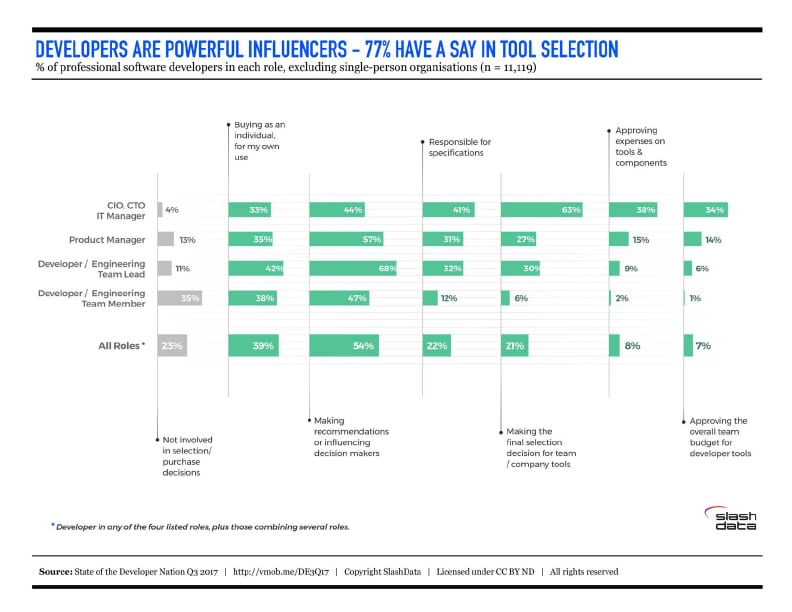
Game Developers are the New Influencers
48% of developers are building games according to this study. Only 11% consider themselves to be professional, however, the platform and game engine they chose to build their games on are quite influential. In fact, the very role that games play in our lives grants it the power to start and end various product life cycles.
Take the Oculus Rift for example; game developers have been championing the use of VR/AR which will, in turn, bring more games to the market. This will cause an increasing number of sales of devices that are compatible. The resulting factor here is that as the platform becomes more popular, more developers will sign on. In fact, 25% of developers are currently targeting VR/AR headsets. We can see the backends of such trends with how platform choices between Microsoft and Apple have panned out regarding Desktop and mobile experiences.
Take the Oculus Rift for example; game developers have been championing the use of VR/AR which will, in turn, bring more games to the market. This will cause an increasing number of sales of devices that are compatible. The resulting factor here is that as the platform becomes more popular, more developers will sign on. In fact, 25% of developers are currently targeting VR/AR headsets.We can see the backends of such trends with how platform choices between Microsoft and Apple have panned out regarding Desktop and mobile experiences.
We can see the backends of such trends when looking at how platform choices between Microsoft and Apple have panned out regarding Desktop and mobile experiences. It will be interesting to see how Apple and Microsoft will compete for platform dominance.
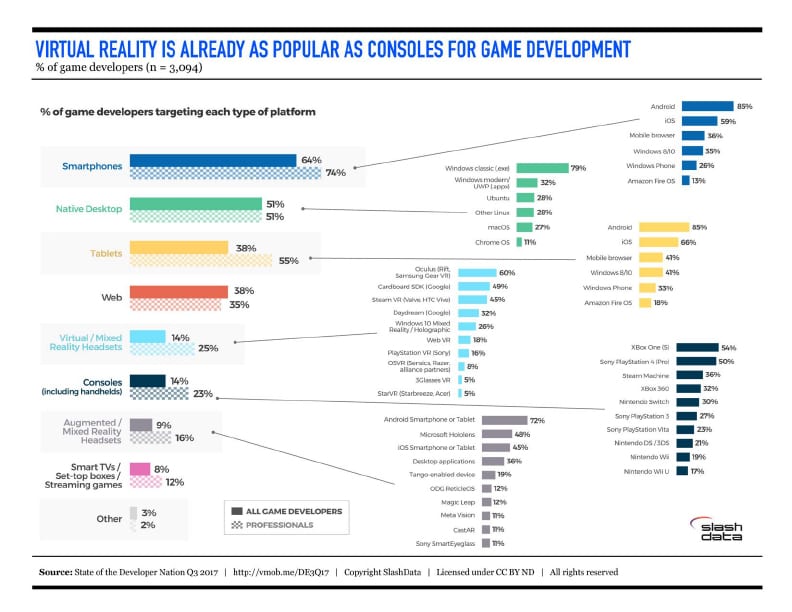
Technology Tribes
Developers tend to display platform bias depending on which platform they learned first. This might not come as a surprise to know that mobile developers tend to favor Apple over Microsoft, and target their markets respectively. And it also isn’t surprising that desktop developers tend to champion Microsoft by a large margin. But the key takeaway here is that developer tribalism has serious effects on the platform choices overall. These effects can lead to market level influences.
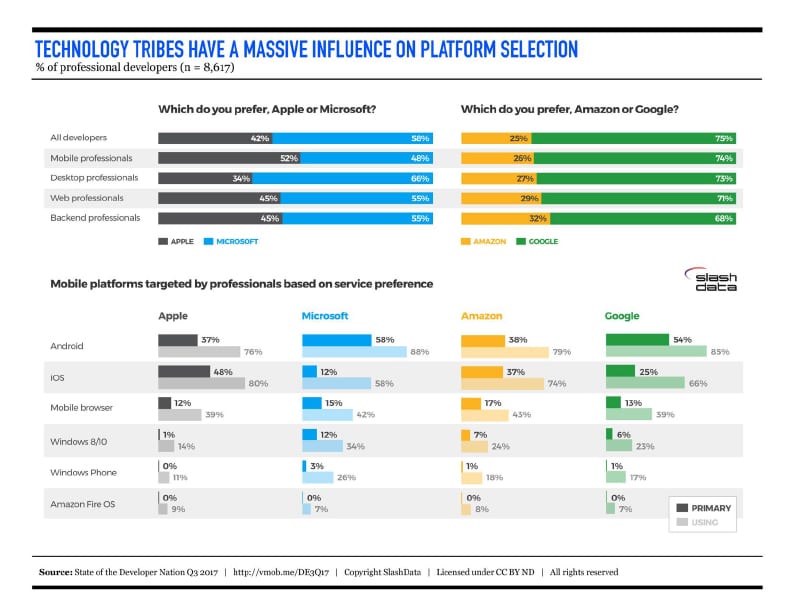
The Internet of Things
As simple as IoT acronym looks and makes what it represents sounds, it’s not. Those who are familiar with dealing with IoT live in an entirely different reality than those who enjoy and take it for granted. The Internet of Things adds a lot of complexity to things we have historically known to be fairly simple. From security to interoperability and connectivity issues, handling bugs and keeping the peace across devices is no small feat.
IoT isn’t a walk in the park, and companies looking to build high-quality IoT experiences should not be expecting their project deadlines to be met as easy as other development projects. Studies show that 42% of IoT project either run over-schedule or over-budget. Only a quarter of those projects completed ahead of schedule.
While the Internet of Things is still a growing technology, many software developers have acknowledged it to be a thought area where most of the issues that arise are concerned with connectivity between devices.
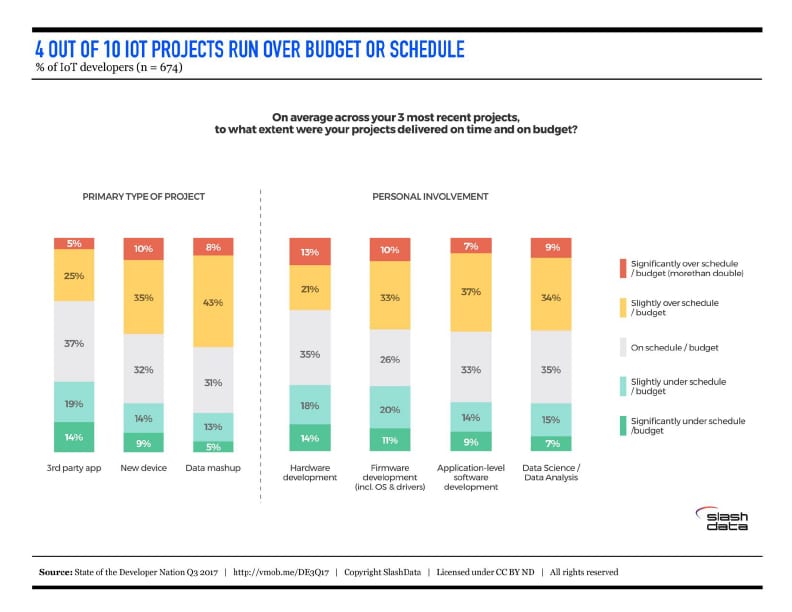
Cloud Market Trends
There has been an overall downward trend of cloud service adoption across the industry. Data processing services are on the up, mainly due to the demands of machine learning and data science. Also, there seems to be an increasing trend to embrace self-hosted cloud hosting as opposed to options like Google Cloud and Microsoft Azure. Amazon Web Services still has a firm grip on the market, most likely on an enterprise level. However as a far as developers personal choices go, many have found that self-hosted is the way to go.
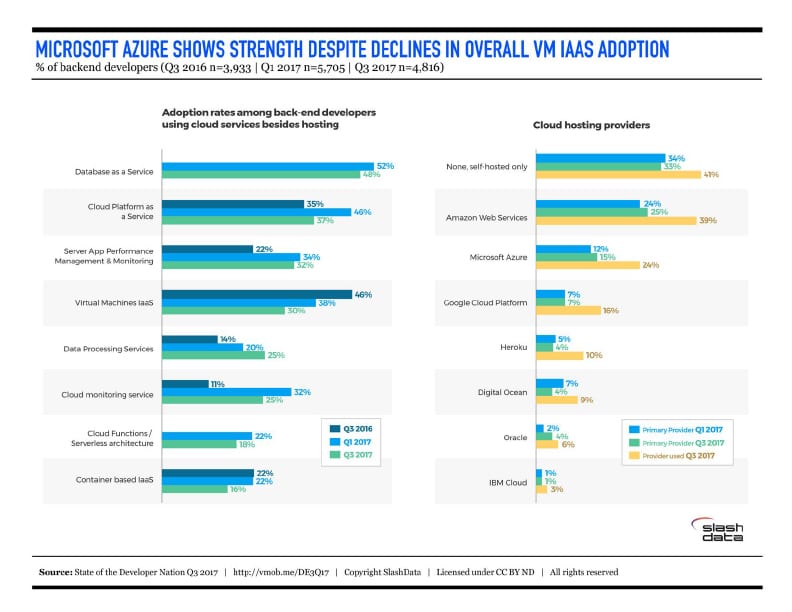
The State of the Developer Nation Q3 report seems to confirm a number of different trends that have been felt but not yet proved through statistical research. We believe this information to be useful for startups looking to find out in what ways can they make their app effective in the market, as well as for established businesses looking to get a better understanding of the application development space in terms of trends and philosophy.
- Glide Unveils Groundbreaking AI-Powered Features to Revolutionize No-Code Software Development - August 7, 2023
- How Low-Code Applications Can Help Your Business - August 6, 2023
- Why No-Code Platforms Are Still Relevant in 2023 - August 6, 2023























